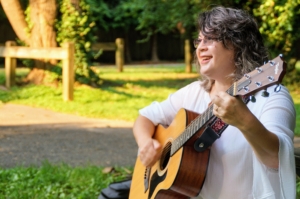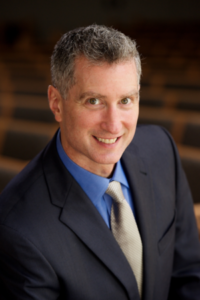A Place for God
I make room for God in the dining room. No, I didn’t buy an extra seat for the table. The dining room is in the southeast corner of the house where we can see the sunrise. There, each morning, I am reminded to begin my day by acknowledging God.
Judaism directs us into a relationship with our invisible God. It isn’t easy for humans to form a bond with an unseen deity, but it is the challenge we are given.
In Torah, at Parshat Terumah, at Exodus 25:8, God instructed Moses that the people should make a sanctuary so that God may dwell among them. וְעָ֥שׂוּ לִ֖י מִקְדָּ֑שׁ וְשָׁכַנְתִּ֖י בְּתוֹכָֽם. At first glance, it might seem that God wanted a place to rest. Perhaps the demands of the Israelites were so great that God just needed a place to put God’s feet up and take a snooze.
Since we know that building the sanctuary was not to fulfill God’s needs, it must have been for our benefit, not God’s. Humans crave a geographic spot to approach God. A house for God helped the people connect to their invisible Deity. A structure like the mikdash (sanctuary) gave the people a place to directly access God.
There is a long tradition that the Hebrew word for place, makom, is one of the many names for God. Our first glimpse of makom is in Genesis’ story of Jacob. As he fled his home, fearful of his brother Esau’s anger, Jacob made camp for the night in the desert. His pillow was a rock. His blanket was the sky. During the night, at that makom, Jacob had a vision of angels rising and descending on a ladder. Jacob woke and remarked in wonder, “God was in this place, and I did not know.”
He was not alone; many times the matriarchs and patriarchs of Genesis accessed God directly. The Hebrew people, born of slavery in Egypt, were less believing. Without a place for God in the physical world, they lacked the capacity for connecting with God in the spiritual realm.
After centuries of slavery, the Hebrews felt distanced from God. Ten plagues, the parting of the sea and the revelation at Sinai were not sufficient. They needed more, a mishkan where they could be in contact with God.
The mishkan was replaced by a stone and cedar palace, the Temple. Destroyed once, they persisted in feeling the need for a makom, a home in which God would dwell, so they rebuilt, only to have it destroyed again. Where was God to be encountered then? Ezekiel said that the indwelling presence of God, the Shekhina, went into exile. Like an unrequited lover, Shekhina wanders, resting in no one place.
After the destruction of the second Temple, the Rabbis reimagined where God would reside. They moved the focus of Jewish ritual from the public to the private realm. The altar of the Temple was replaced by the dining room table. There, the ancient animal offerings were replaced by loaves of bread. For today’s Jews, the most impactful Jewish experiences may be occurring at that table, whether it is a Shabbat dinner or Passover seder.
Judaism of the 21st century is both a radical departure from and an echo of the past. Through the crucible of a pandemic, Judaism has adapted in a variety of ways.
As public worship spaces closed over the past two years, life cycle events shifted to back yards and living rooms. Synagogue communities reassembled outdoors, in tents or on hiking trails in local parks. In nature, they could experience the glories of warm sun or the threat of rain.
Much of Judaism moved to the small screen. Some progressive Jews substituted Shabbat suits for cozy pajamas, watching services on YouTube while sipping coffee. Online learning expanded across the spectrum of Jewish education.
While in-person attendance has declined, the demands on clergy have grown. The existential challenges of our times have left many people psychologically harmed and spiritually drained, and turning to rabbis and cantors for support. Rabbis responded with great compassion. In addition to pastoral care, many Rabbis were tech-challenged. No rabbinic program taught us how to operate a Zoom room or which video equipment to purchase. Clergy got more creative in teaching, leading services, and sustaining community at a distance. In my community, we offered a meal delivered to your doorstep on a Friday night to be enjoyed after sharing services on Zoom.
Ultimately, I predict that God will best be found not in any building or room of any house. Rather, our connection with God will be right inside each of us, where God has always been. Where does God dwell, asked the Hasidic master the Kotzer Rebbe? Anywhere we let God in.
The first light of sunrise enters my home through the windows of our dining room. That is where I begin my day with the words Modeh Ani. I acknowledge God who restored me to life this morning, yet again. Perhaps, like me, you make a physical space where you greet God.
And why not? This world is filled with wonders and terrors, astounding inventions, and idolatrous weapons. Connecting with our Creator is as challenging as ever. Just as our ancestors sought to anchor God to a place, we too find ourselves looking for particular places where we can commune with the Divine.
If you’ve had trouble finding your connection to God, remember that the ancient Hebrews who saw plagues descend, the Red Sea part, and Sinai quake, needed a structure to access God’s presence. Start with your dinner table this Shabbat. Along with peace and relaxation, welcome the Divine Presence to rest there with you. In this way, you can create the makom/space to welcome God. And perhaps your dining room will be a sanctuary too.
Rabbi Evan J. Krame






 Evan J. Krame was ordained as a rabbi by the
Evan J. Krame was ordained as a rabbi by the